COOPERATION MODEL
ARTIFICIAL INTELLIGENCE
PRODUCT ENGINEERING
DevOps & Cloud
LOW-CODE/NO-CODE DEVELOPMENT
FRONTEND DEVELOPMENT
CLOUD DEVELOPMENT
MOBILE APP DEVELOPMENT
LOW CODE/ NO CODE DEVELOPMENT
EMERGING TECHNOLOGIES







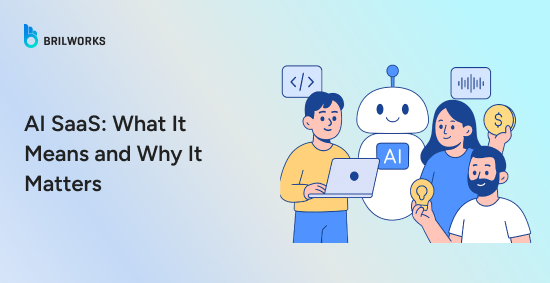
Earlier this year, there was a lot of talk when Microsoft’s CEO, Satya Nadella, suggested that the traditional SaaS model might "collapse" in the new "agent era." This sparked a big question: Is AI about to replace SaaS? In reality, the answer is the opposite.
Far from collapsing, the new “AI SaaS” sector is booming. Recent Q3 2025 reports show a massive $1.48 billion in tech deals in India alone, explicitly fueled by AI and SaaS. Globally, the market is projected to clear $100 billion this year. In boardrooms and on product teams, everyone is now focused on how quickly they can adopt AI SaaS, not whether they should.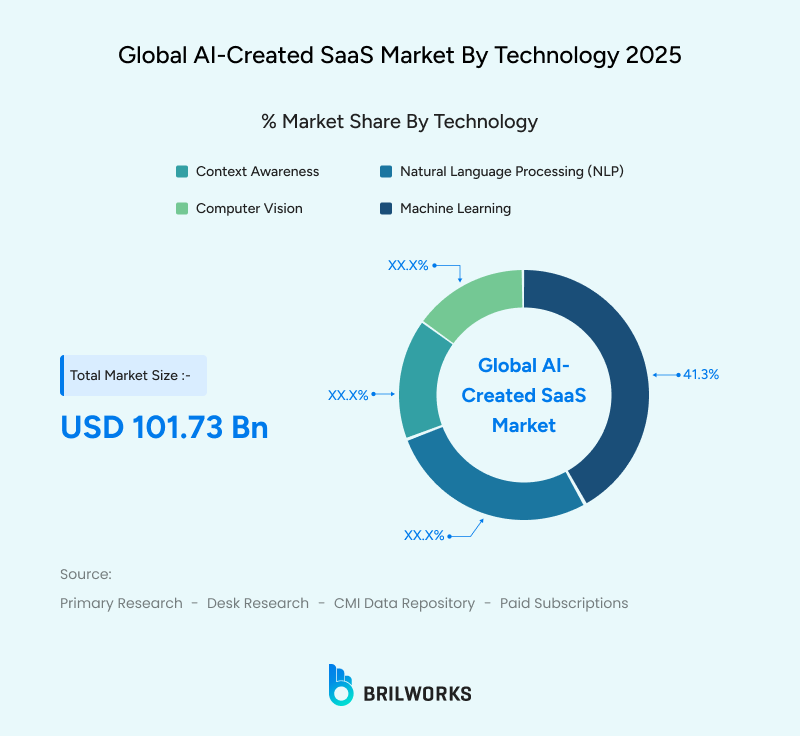
Let’s clear things up, since this is where many people get confused. "AI SaaS" isn’t just a new label for old software with an added AI feature. There’s a real difference in how it’s built and the value it offers.
To clarify, AI SaaS (Artificial Intelligence Software as a Service) isn’t just regular cloud software with a smart feature added.
In AI SaaS, artificial intelligence is central to the product’s value. Rather than only storing your data, AI SaaS uses it to automate tasks, create new content, predict outcomes, and offer personalized experiences. The software becomes an active partner, not just a tool.

It is a cloud-based app that integrates artificial intelligence. You use it online and pay a subscription, just like with regular SaaS. The main difference is in what it does.
Traditional SaaS stores your data, but AI SaaS uses your data to automate tasks and make smart decisions. This lets any company access advanced AI features, such as machine learning or natural language processing, without the high costs or need for a specialized team.
The AI hype of 2024 has become the enterprise budget of 2025. While previous years were about experimentation, we are now in the age of implementation. The numbers don't lie. Market analysts project the global AI-created SaaS market to hit $101.73 billion in 2025. More importantly, they forecast it will grow to over $1 trillion by 2032, with a compound annual growth rate (CAGR) of nearly 40%.
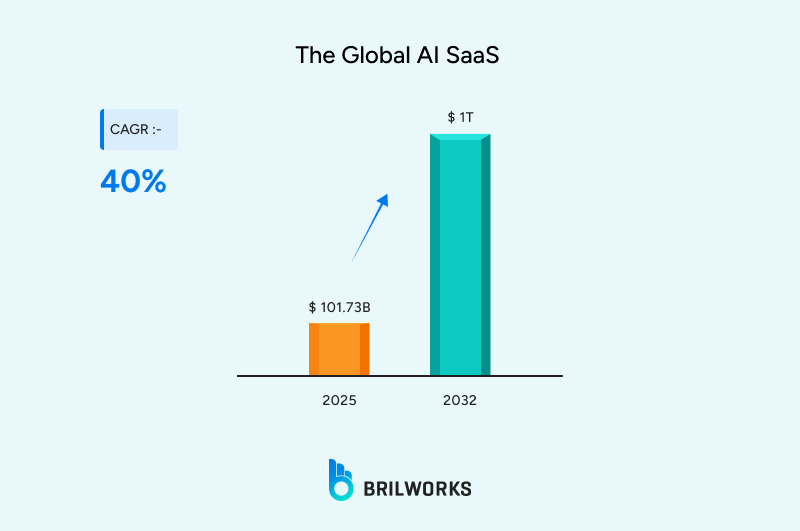
For founders and product leaders, these numbers show that the market is proven, investment is strong, and there’s a big opportunity right now.
It’s hard to miss all the talk about AI SaaS. Every week, headlines announce new nine-figure funding rounds for AI-native startups, creating an intense environment where it feels like everyone is betting big on the future.
This level of market noise can often feel like pure speculation, making it difficult for a founder to separate the gold rush from a genuine gold mine.
But as a business owner, it’s important to look beyond the forecasts and see where companies are actually spending money. Funding news is one thing, but real change comes from executive strategy.
According to a 2025 C-Suite Outlook survey, almost half of executives expect AI to be an "organizational game changer" this year. Executives now list "investment in technology, including AI" as a main way to grow profits.
This is the key difference. It’s like comparing a single feature to the foundation of a product.
Traditional SaaS with AI: A project management tool adds an "AI-suggested task" button. It's a helpful add-on, but the core product still relies on you to do 99% of the work.
AI-Native SaaS: For example, an AI-powered sales platform can listen to sales calls, update the CRM automatically, write follow-up emails, and give managers a sentiment analysis report. Here, AI isn’t just a feature. It’s the main product.
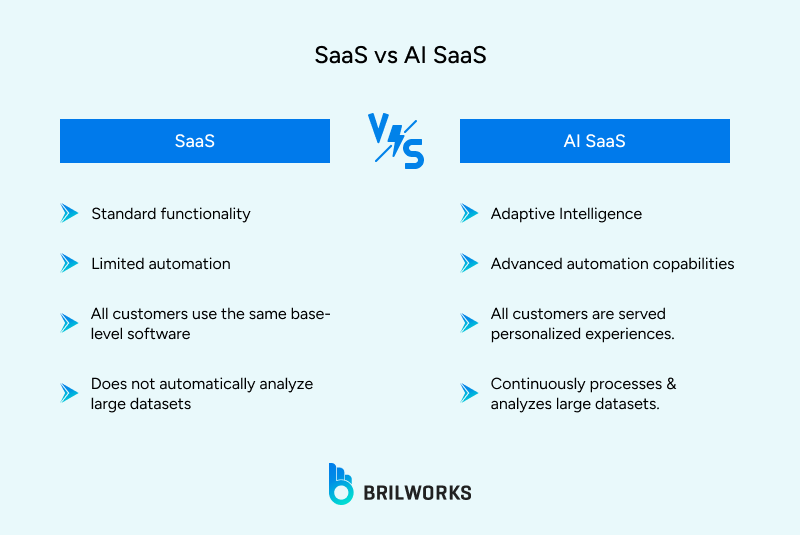
|
|
Traditional SaaS |
AI-Native SaaS |
|
Core Value |
Provides access to a centralized tool. |
Provides an automated outcome or insight. |
|
User Role |
The user operates the tool. |
The user supervises the AI. |
|
Example |
A helpdesk where you manually sort tickets. |
A helpdesk that auto-triages, answers 80% of tickets, and flags complex issues for humans. |
It can be both, depending on how you look at it.
For founders building these tools, development costs are high. Creating, training, and launching custom models can cost from $35,000 to over $400,000.
For businesses using AI SaaS, it’s cost-effective. With a subscription, you get access to powerful AI models for a set monthly fee. There’s no need to hire data scientists. You save time, automate complex tasks, and gain insights that used to be out of reach.

Sales & CRM: Salesforce (Einstein) and HubSpot (ChatSpot) use AI to score leads, automate data entry, and forecast sales, letting reps focus on selling.
Customer Support: Zendesk and Freshdesk use AI to power 24/7 chatbots, understand customer intent, and automatically route tickets, slashing response times.
Marketing: HubSpot (Content Assistant) and Jasper use generative AI to write blog posts, ad copy, and social media updates in seconds.
Operations: monday.com uses an AI assistant to automate task creation, summarize long documents, and build complex workflows.
If you start without a plan, you risk wasting money. Here’s how to take a smart approach.
Begin with your reason, not just the tool. Don’t buy AI because it’s popular. First, identify a costly business problem, such as high customer churn, slow sales, or manual data entry. Make sure the AI solution matches a key business goal.
How will you measure success?
Don't accept vague promises. Ask for specific results, like "Reduce customer support tickets by 30%," "Increase sales-qualified leads by 20%," or "Cut report generation time from 5 hours to 5 minutes." ROI.
Implementing an AI chatbot for common questions is a perfect example. It shows immediate value and builds momentum for larger projects.
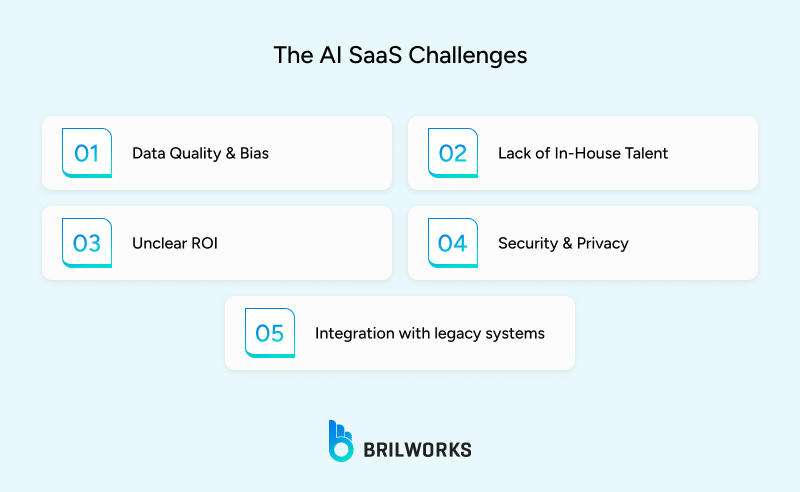
Adopting AI SaaS comes with challenges. The main issues businesses face in 2025 are:
Data Quality & Bias: AI is only as good as the data it's trained on. If your data is a mess, your AI will be, too.
Lack of In-House Talent: Over 40% of companies say not having enough AI expertise is a big barrier. This is one reason the SaaS model is attractive, since it removes this obstacle.
Unclear ROI: This is the main reason AI projects fail. Without a clear plan, you might spend money without seeing results.
Security & Privacy: Allowing AI to access your company’s data requires strong trust and strict compliance, such as following GDPR or CCPA rules.
Legacy Systems: Connecting a modern AI platform to an old database can be a major technical challenge.
Despite these challenges, the most important question is: "What does it cost to do nothing?"
As competitors use AI to become faster and more efficient, doing nothing is no longer an option. The AI SaaS revolution has already arrived.
What should you do if existing tools don’t meet your needs? Many businesses have great ideas for custom AI, but can’t find the right solution on the market. In these cases, custom SaaS development can help solve your unique challenges.
Get In Touch
Contact us for your software development requirements
Get In Touch
Contact us for your software development requirements